Love is in the Air.
Making croissant is a labour of love. It’s a protracted, laborious process that has none of the snappy, quick to make, time saving credentials that bloggers often brag about in relation to their recipes. Nor can I make any outlandish claims regarding the puritanical nature of the calorie count or perceived healthiness. In fact croissants are the antithesis of those ‘healthy-happy-5-minute-make’ meals, it’s a recipe which spurns being rushed, it stands in the face of our hectic lifestyles and refuses to be expedited.
Like love, home made croissant are able to satisfy the harder-to-reach parts of the human soul. Making these from scratch allows a deep sense of satisfaction and fulfilment to flourish, as you watch the dry ingredients, liquids and yeast that you’ve lovingly worked, turn into something quite incredible.

It’s not that you can’t buy good croissant. In fact, with the meteoric rise of foodie culture and artisanal bakeries on every corner, I’ll wager that if you live near a town of any size you could easily go out today and buy a pretty good croissant. If you live in a city, then you’ll probably be spoilt for choice. I know the precise location of the three best bakers within a short walk of my flat and which of them is open on a Sunday, so you might wonder why I would make these at home when they’re so easily available.
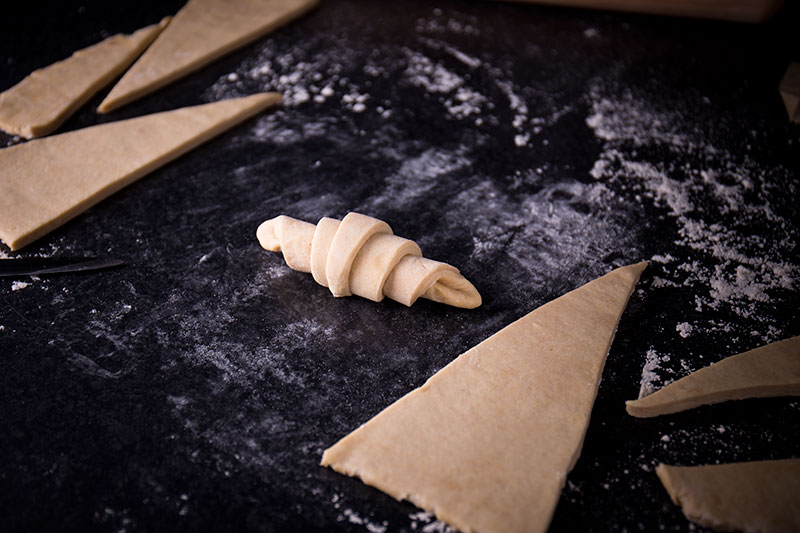
Baking Tantra.
Making croissant is the culinary equivalent of tantric sex. It’s a long, drawn out process which only contributes to a heightened appreciation of the finished article, going to a bakery and buying some completely leapfrogs this point. Much of the enjoyment is in the journey, so that by the end, when you reach the hallowed moment that you taste your first home made spelt croissant, it will taste better than any croissant that has have passed your lips until that point in your life.
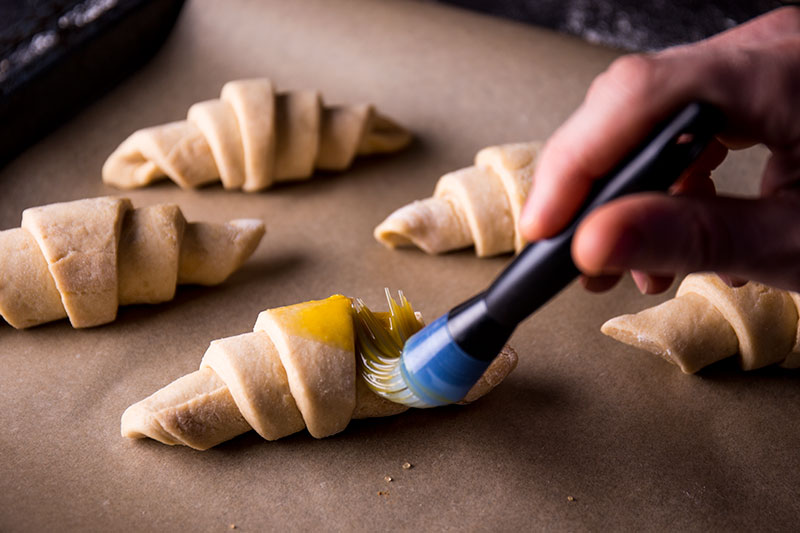
Supermarket croissants don’t count. The longer the shelf life, the worse they are, so those thick, bready ones in cellophane packaging with a ‘use by’ date of three days from now are no good. The ones from the in-store bakery are better, but still nowhere near as good as a proper, full fat, freshly made croissant, because they lack weighting of the vital ingredient, butter. Butter is the ingredient which creates the flaky, light, layered experience of a truly great croissant, yet butter is the one ingredient that supermarkets are trying to reduce in their goods, for the sake of your health and their profits. That is why you need a good quality bakery or patisserie for a real croissant, one whose priorities are aligned with great baking, rather than nannying your calorific intake.
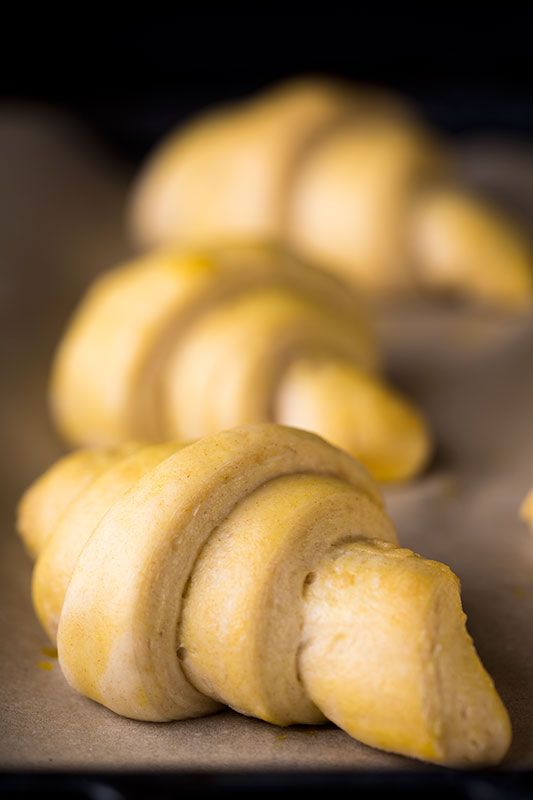
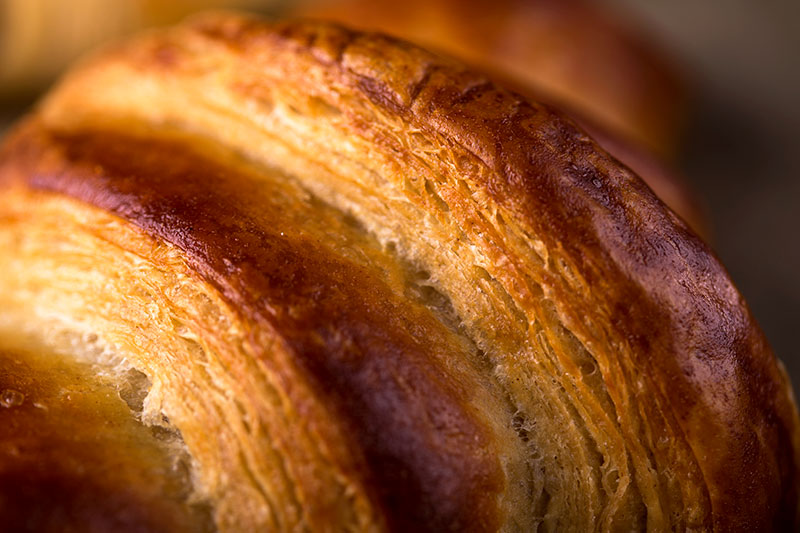
Time is on Your Side.
When I read a new recipe, one of the first things I do is scan the make time, because it holds fundamental importance to me when choosing what to cook. If it’s under an hour, then great, it can go on ‘the list’, but anything over an hour and I need to consider more carefully how it will fit into my life. When you look at a genuine croissant recipe, you may notice the ‘make’ time is somewhat longer than most recipes, standing at an almighty 36 hours, or sometimes listed as three days. This is where the comparison to tantric sex comes back in, because this is a recipe where you need to lovingly, patiently craft your ingredients over an extended period of time, to create something utterly amazing at the end.
This is also why making croissant at home, using an authentic technique, is an exercise in love. There is little other reason to devote 36 hours of your life to the crafting and baking of some small, golden, flaky, crispy, peculiar shaped bread buns, when you can walk down the road and buy some in considerably less time. However, after all those hours of loving, caring attention, when your beautifully crafted, golden spelt croissant are taken out of the oven and consumed with gasps of joy echoing around the kitchen, you’ll finally realise that it’s utterly worth every single second.

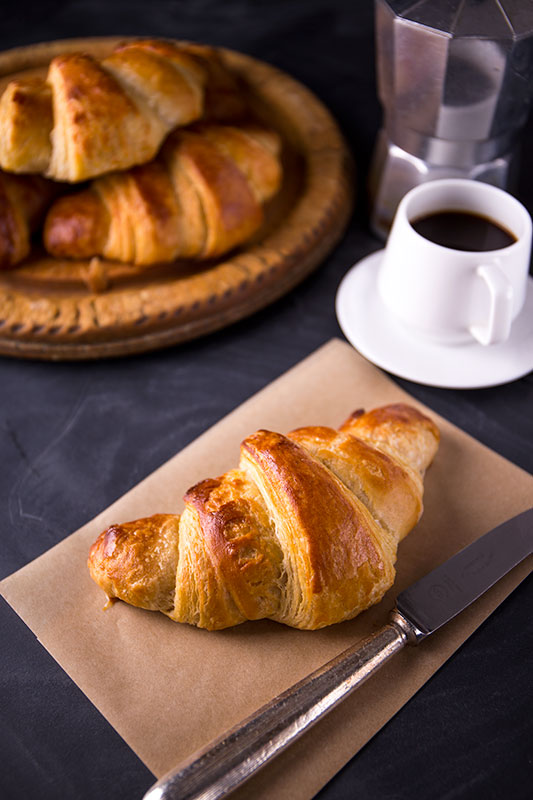
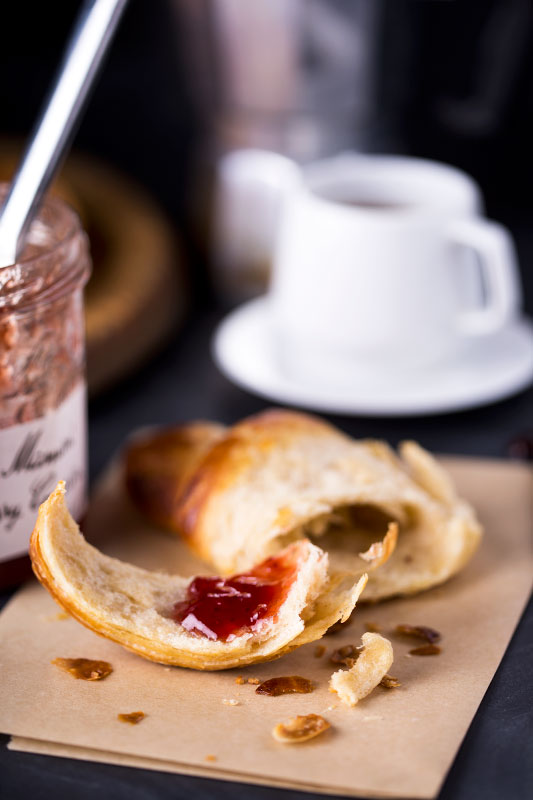
The schedule
Here’s a schedule for you to use if you wanted fresh spelt croissant on Sunday, mid morning. None of these timings are set in stone, the importance is that the dough has long periods of rest, and kept well chilled. The rest periods could be longer or shorter than suggested without disastrous results.
Friday 8pm Make the dough, wrap it and refrigerate (Takes 20 mins)
Saturday 10am Add the butter to the dough, 1st fold (Takes 15 mins)
Saturday 12pm Roll out and 2nd fold (Takes 10 mins)
Saturday 2pm Roll out and 3rd fold (Takes 10 mins)
Sunday 8am Roll out, cut, roll up croissant, egg wash (Takes 20 mins), leave to rise for 2 hours
Sunday 10.30am Cook in oven for 15 minutes
Sunday 10.45am Eat

Perfect spelt croissant
By Gavin Wren, adapted from a recipe by Bread Ahead.
Makes 12 croissant
PDF recipe card to download or print
PDF croissant folding guide
Ingredients
Part 1:
250g white spelt flour
250g wholemeal spelt flour
55g sugar
125ml water
125ml full fat milk
40g softened butter
10g instant yeast or 30g fresh yeast
Part 2:
280g unsalted cold butter
Part 3:
1 egg (any size)
Directions
Once all combined, place onto a lightly floured work surface and knead just a couple of times. The key is to ensure you have an even, well mixed dough which has been worked as little as possible.
Flatten the dough into a thick square, wrap in baking paper and place in the fridge for 8 to 12 hours.
From now on it is important to keep the dough and your butter cold at all times. Avoid working it in the middle of a hot summer day, do it first thing in the morning. Don’t get it out of the fridge until you absolutely need to and never leave it sitting on the side. You can even keep your rolling pin in the fridge to help.
Take your butter and place it between two pieces of baking paper, then bash it with a rolling pin until you have a square about 5-10mm thick. Wrap with the baking paper and refrigerate for at least an hour.
Place your dough on a lightly floured surface, then roll out to make a square that your butter can fit within if you rotate the dough 45º, so it’s like a diamond shape in front of you (figure 1). Now, roll each corner of your dough square out, so they are long and thin, like four pointed star, leaving you with a raised, square centre area, the size of your butter (figure 2).
Place your butter on this raised centre section, then fold all four of the rolled out points of your star over the top, making sure they all overlap to completely encase the butter. Now roll this combined dough out to a long, rectangular shape (figure 3), brush off any excess flour and fold the ends of your rectangle back over the centre, so they all overlap, giving you three layers (figure 3).
Wrap in baking paper and place in the fridge for at least 1 hour, until it’s chilled and well rested. Remove, roll out to a rectangle and fold the ends over again (figure 3). Wrap, chill for 1 hour then repeat the rolling and folding once more, so that you’ve rolled and folded three times. Now wrap well and refrigerate for at least 12 hours.
Take your dough from the fridge and place on a lightly floured surface.
Roll out to a long rectangle about 5-6mm in thickness. Using a sharp knife, cut across your dough in a zig-zag to make 12 triangles (figure 4)
Place a triangle in front of you, with the thick end away to you. Make a small cut, about 10mm long, in the centre of the piece (figure 5a). Now roll it up, starting from the cut you made, pushing the corners out as you start to roll (figure 5b). Stretch the dough slightly as you roll to lengthen it, until you have a fully rolled croissant.
Place each finished croissant on baking paper lined baking sheet, keeping them well spaced so they have room to grow as they rise. Whisk your egg and brush all over the croissant, making sure you get into all the corners. Place the tray in a warm place, around 24ºC for about 2 hours. They should puff up increasing in size by about 50% and you’ll be able to see the layers develop, if they haven’t risen much, either wait longer or see if you can check the temperature.
Pre heat your oven to Gas mark 6, 400ºF, 204ºC, 184ºC fan and bake for 15-18 minutes, by which point they should have taken on a rich, golden colour and become crispy and flaky on the outside. Serve and enjoy!


